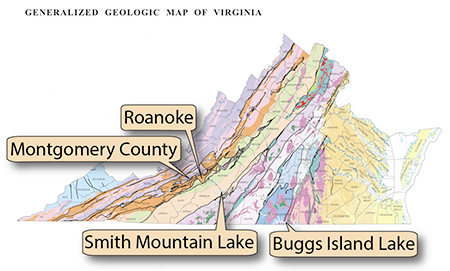
Virginia's Rivers (Part 5)
Roanoke River
• The Roanoke River System drains toward Albemarle Sound in North Carolina, but has substantial parts of its watershed in Virginia.
• The Roanoke River begins in the Valley and Ridge of southwest Virginia, in eastern Montgomery County. From there, it passes through the city of Roanoke, crosses through a water gap in the Blue Ridge, and flows through the Piedmont, and into North Carolina. It crosses the Fall Line at Roanoke Rapids, North Carolina and enters the Coastal Plain where it eventually reaches Albemarle Sound and the Atlantic Ocean.
• There are several important dams and reservoirs along the Roanoke River including: Smith Mountain Lake (Bedford, Franklin and Pittsylvania Counties), Buggs Island Lake (also known as Kerr Reservoir, near the North Carolina border in Mecklenburg County) and Lake Gaston.
• An important tributary is the Dan River that drains much of the south-central Piedmont. Danville is an important city along the Dan River.
Smith Mountain Lake is an impoundment of the Roanoke River. Note that the dam is built across a water gap through Smith Mountain. (Map data by Google)

Smith Mountain Dam, built across the water gap of Smith Mountain. The view is looking westward. Smith Mountain Lake is on the far side of the dam. The body of water in the foreground is Leesville Lake, a small reservoir just downstream from Smith Mountain. Smith Mountain Dam is an important hydroelectric dam, and the lake is a major recreational destination in central Virginia. The lake is located at the tri-county boundary between Bedford, Franklin, and Pittsylvania Counties. (Photograph by Robert Whisonant)
